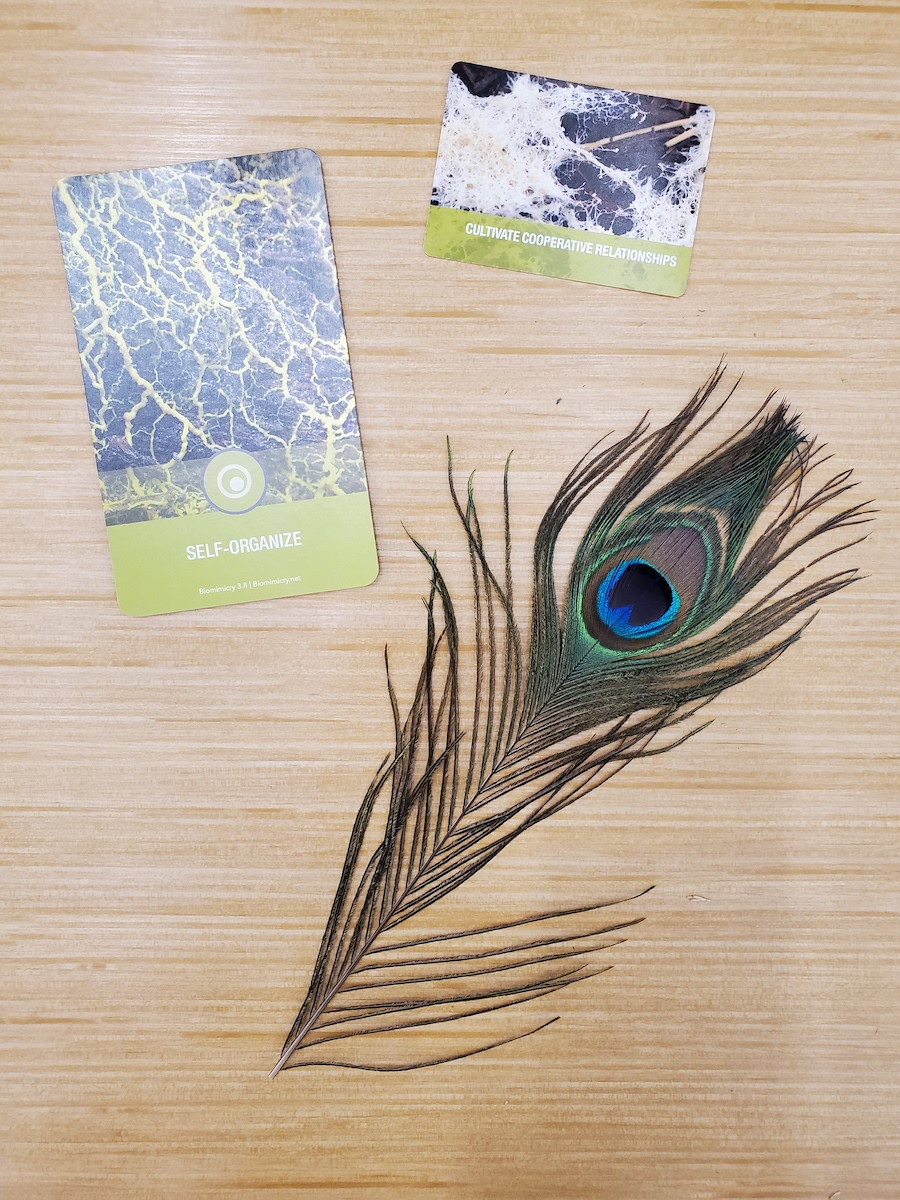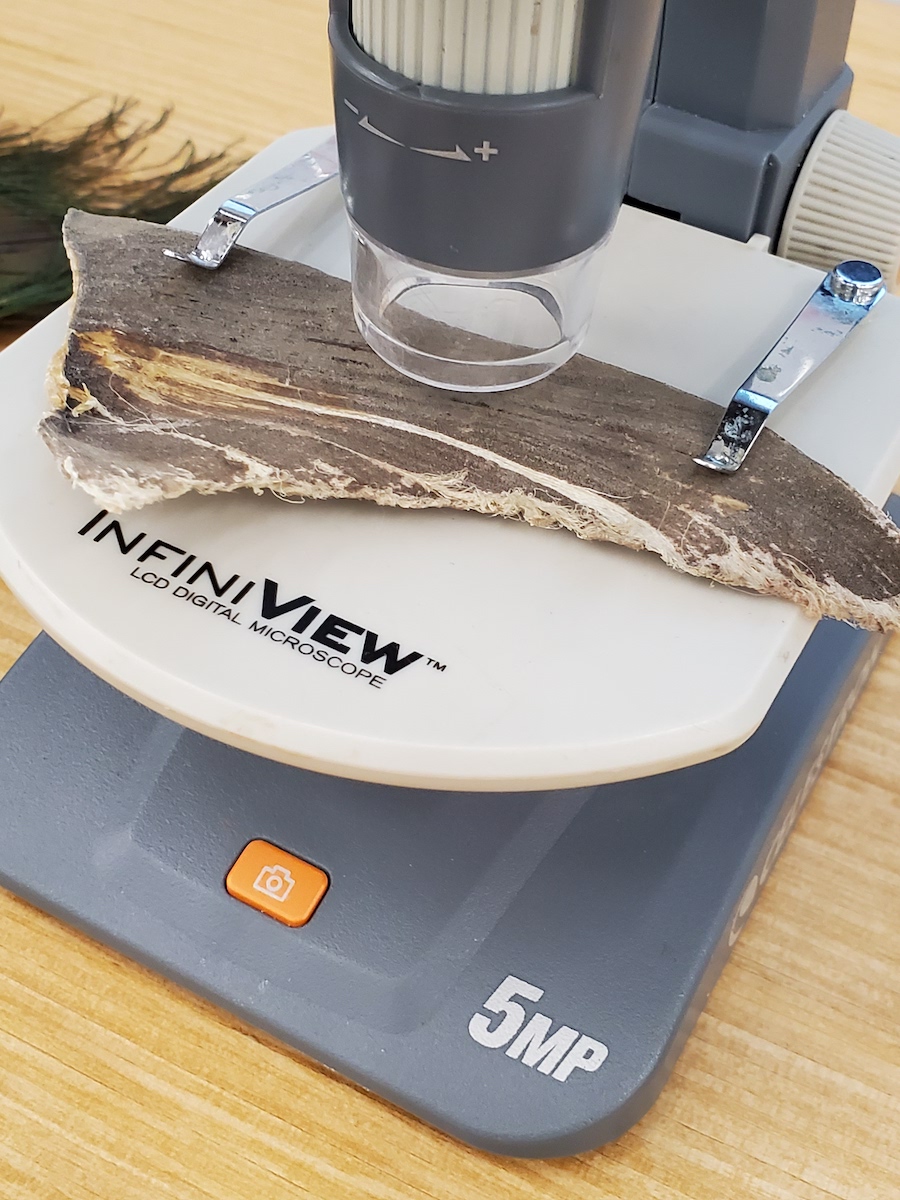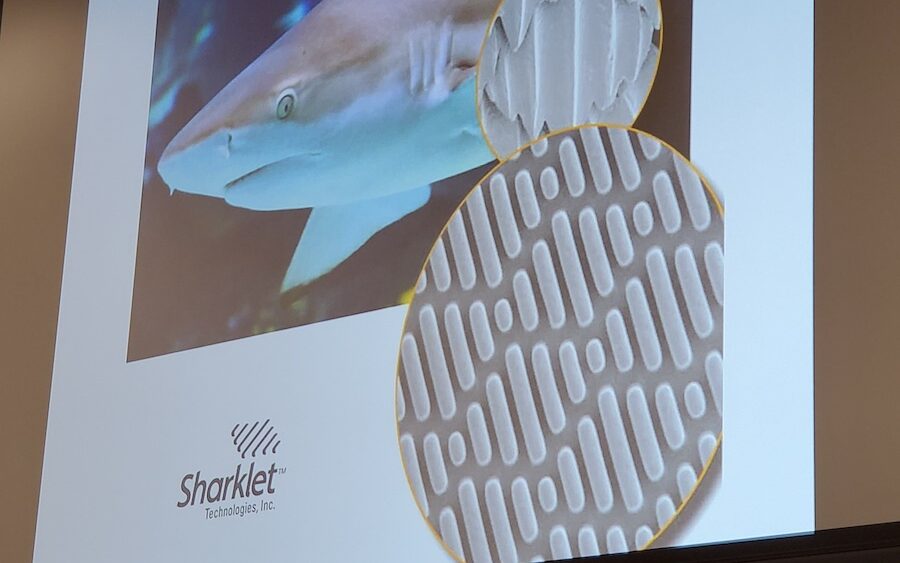Over 160 guests walked through the College of Charleston’s Cistern Yard and into the newly renovated Rita Hollings Building. Deborah Bidwell, College of Charleston senior instructor, was our guide into a relatively new field of science called biomimicry. With over 25 years of experience, Bidwell looks to the natural systems as inspiration for solving human problems.
Many of the issues we’re facing today — how to protect, distribute, coordinate and compete — have already been solved by nature billions of years ago. “A sustainable world already exists, we just need to rethink our relationship with nature,” said Bidwell. She assured us that reconnecting with nature doesn’t mean resorting to primitivism and singing “Kumbaya.” Biomimicry seeks to understand how nature does what it does and how humans can emulate that. One example is how a kingfisher, the Olympic diver of the bird world, led engineers to redesign the shape of bullet trains in Japan. When kingfishers move from air to water, they do so without making a splash. By emulating its beak design, engineers were able to eliminate “air ripples,” or loud noises that were caused when the train moved between air of different densities.
What color is a peacock feather? If you said purple, green or turquoise, you’re incorrect! Peacock feathers only contain a brown pigment. The structural shape of the feather bends and reflects light  allowing us to see brilliant shades of color. Bidwell pondered, “Can you imagine if we never had to dye or paint anything again? If a shirt was red simply because of its structure?”
allowing us to see brilliant shades of color. Bidwell pondered, “Can you imagine if we never had to dye or paint anything again? If a shirt was red simply because of its structure?”
One thing’s for sure: no one will look at Velcro the same way! Velcro was modeled off of cockleburs, a plant seed that attaches to fur and fabric. The microscopic hook and loop structures inspired the fasteners we use today.
You may have a smoother ride with fewer stops to refuel thanks to the primary feathers of birds. Their shape has led to the addition of winglets on airplanes. Similarly, modeling the leading, scalloped edge of a humpback whale fin has created more efficient wind turbines and ceiling fans.
Termites, in other parts of the world, create tall chimneys to keep the fungus they farm at a constant temperature. They rely on passive cooling as the heat rises through their chambers. This method has been borrowed in buildings and eliminates the need for heating and cooling systems.
You don’t usually see sharks covered in barnacles and other hitch-hiking animals. That’s because shark skin, covered in microscopic tooth-like scales, does not allow bacteria to grow. A company called Sharklet harnessed this idea and created a variety of antibacterial items. One of their products, an adhesive, is used to cover frequently touched hospital surfaces like door knobs. Bidwell alluded, “Maybe we can avoid antibacterial resistant diseases by combating the issue structurally instead of chemically.”
 We can learn a lot, not only from how nature does more with less energy, but also by studying how nature deals with waste. An entrepreneur in the UK collected cardboard from area restaurants and sold it to farms to use as horse insulation. Finding another use for the manure-soaked cardboard, he then cultured a worm farm. The worms were used to feed farmed tilapia, and the tilapia produced caviar, sought after by the original cardboard- discarding restaurants. This grew into an organization with a closed loop system, yielding no waste and gaining profit along each step.
We can learn a lot, not only from how nature does more with less energy, but also by studying how nature deals with waste. An entrepreneur in the UK collected cardboard from area restaurants and sold it to farms to use as horse insulation. Finding another use for the manure-soaked cardboard, he then cultured a worm farm. The worms were used to feed farmed tilapia, and the tilapia produced caviar, sought after by the original cardboard- discarding restaurants. This grew into an organization with a closed loop system, yielding no waste and gaining profit along each step.
Bidwell left us with a lot to think about. “What might we learn from live oaks about hurricane proofing? They’ve figured it out,” she said. With two million species known to date and possibly many more to discover, humans have an enormous library of resources.
We were challenged to approach our next problem by asking, “What would Nature do?”
Thank you to our sponsors, Mary and Mason Holland and College of Charleston.
Excited for the next Holland Lifelong Learning lecture? View the list of upcoming sessions.


